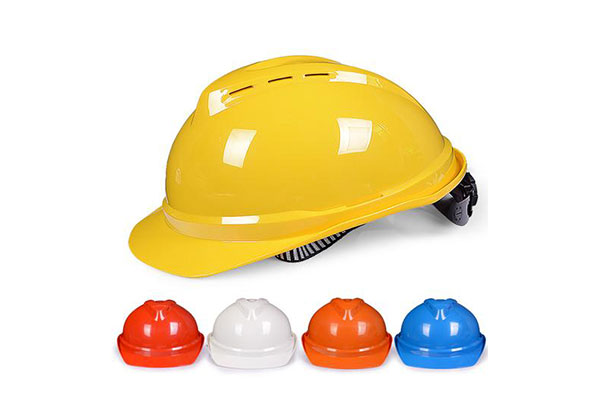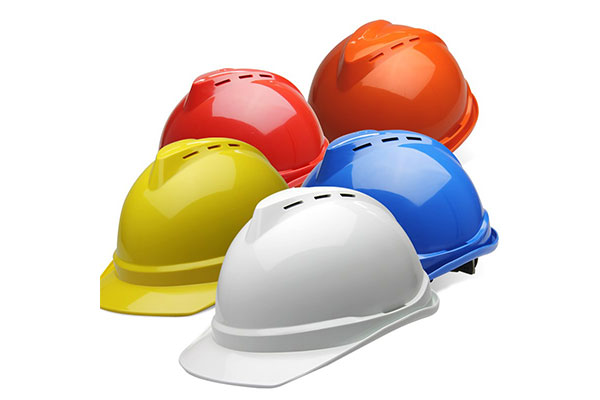Choosing the Right Safety Helmet: A Practical Guide
Safety helmets are essential personal protective equipment (PPE) across various industries, safeguarding workers from head injuries caused by falling objects, impacts, and other hazards. Choosing the right safety helmet for your industry involves considering specific risks, compliance standards, and functional features. In this article, we’ll explore how to choose the ideal safety helmet for your specific industry and ensure compliance with safety standards.

Why Safety Helmets Are Critical
Head injuries can have severe consequences, ranging from minor cuts to life-threatening trauma. According to workplace safety statistics, proper helmet use significantly reduces the risk of head injuries. This makes selecting the correct helmet a priority for employers and workers alike.
Key Factors to Consider
1. Understand Your Industry’s Risks
Different industries present unique hazards:
- Construction: Risk of falling objects and overhead work.
- Manufacturing: Potential for impacts with machinery or flying debris.
- Mining: Falling rocks and low-clearance areas.
- Energy Sector: Electrical hazards or explosive environments.
Each scenario may demand a specialized type of helmet.
2. Compliance with Safety Standards
Look for helmets that meet local and international standards:
- ANSI Z89.1 (USA): Covers impact protection and electrical resistance.
- EN 397 (Europe): Focuses on general industrial safety requirements.
- AS/NZS 1801 (Australia/New Zealand): Specifies head protection in construction and mining.
Verify the certification label to ensure compliance.
3. Helmet Type
There are various types of safety helmets:
- Hard Hats (Type I and II): Type I protects the top of the head, while Type II provides lateral impact protection.
- Bump Caps: Lightweight helmets for low-impact environments.
- Electrical Safety Helmets: Designed with non-conductive materials for electricians and linemen.
Choose the type that matches your work environment.
4. Material and Durability
Helmets are typically made from materials like:
- High-density polyethylene (HDPE): Lightweight and durable.
- Polycarbonate: Offers resistance to heat and impact.
- Fiberglass: Strong and ideal for heavy-duty applications.
Choose a material suited to your working conditions.
5. Comfort and Fit
A comfortable helmet will make people use it for a long time. Key features include:
- Adjustable straps and harness systems.
- Sweatbands for hot environments.
- Lightweight designs for prolonged wear.

Special Features to Consider
Depending on your industry, additional helmet features may be necessary:
- Chin Straps: For secure fit in windy or high-movement jobs.
- Ventilation: Essential for comfort in hot climates.
- Face Shields and Visors: Protect against sparks, dust, or chemicals.
- Headlamp Attachments: Useful in low-light environments like mining.
- Communication systems: Useful in noisy environments.
- Reflective strips: For better visibility in low light.
Industry-Specific Recommendations
Construction Industry
- Look for helmets with ANSI/ISEA Z89.1 certification.
- Ensure compatibility with chin straps for working at heights.
Electrical and Utility Work
- Select Class E (Electrical) helmets for protection against high-voltage shocks.
- Ensure the helmet meets IEC 60900 standards.
Manufacturing and Industrial Work
- Opt for helmets with lateral protection and impact resistance.
- Consider integrated face shields for chemical splash protection.
Oil and Gas Industry
- Use helmets resistant to heat and chemical exposure.
- Choose designs with ventilation for hot environments.
Maintenance and Lifespan
Safety helmets require regular inspection for cracks, dents, or signs of wear. Most helmets have a recommended lifespan of 2-5 years, depending on material and exposure to environmental factors like sunlight or chemicals.
Conclusion
Choosing the right safety helmet for your industry involves a balance of compliance, functionality, and worker comfort. By understanding your industry’s unique hazards and the available safety standards, you can provide your team with helmets that not only protect but also enhance productivity.
Ready to equip your team with the best safety helmets? Contact Us for high-quality PPE solutions tailored to your industry’s needs.

